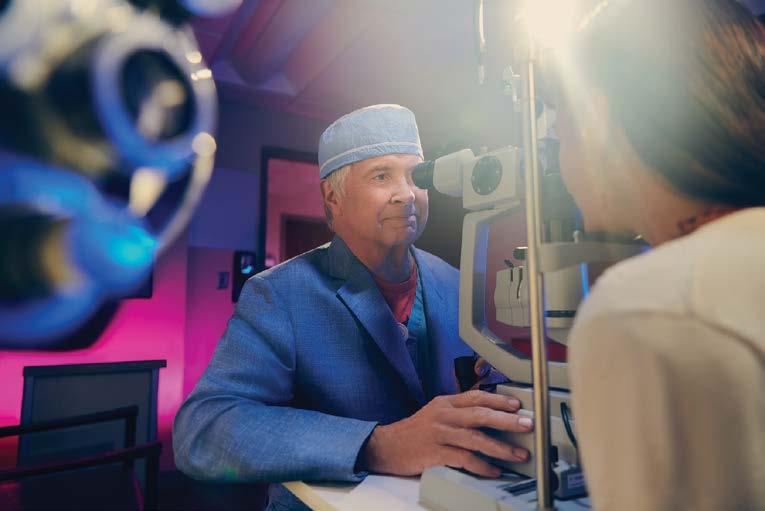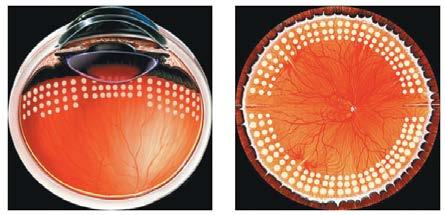
1 minute read
A national leader in sight.
We’re ranked one of the top recipients of National Institutes of Health funding for research. That’s because we’re committed to doing the critical research that leads to revolutionary breakthroughs for the world of ophthalmology.
See the di erence at uabcallahaneye.org.
is caused by vitreous gel moving in the eye,” Morris said. “When you are 20, the gel is solid and clear. But as you age, the gel starts to turn liquid and move around. That movement can cause a tear, resulting in retinal detachment.
“In Stickler children, vitreous gel never forms completely, so they have a partial gel floating around just like older folks, from birth onward.” As a result, Stickler patients have a 65 percent lifetime risk of retinal detachment.

When the two family members with Stickler Syndrome came to see Morris, they had both lost vision in one eye, and they were looking to protect the vision in their good eyes. They had been told there was nothing they could do. Morris performed the encircling laser bonding.
“We found a back door proof that encircling laser treatment provided reliable prevention for detachment, even in older people. We connected the dots showing that what works in a kid with Stickler Syndrome should also prevent the more common retinal detachments in older folks, because they have the same pathogenesis of peripheral retinal tears,” he said. Morris has performed the procedure for other Stickler patients in the ensuing years, and the Helen Keller Foundation released the results in January. “It reduced Stickler Syndrome retinal detachment 10-fold on average from all reports,” according to the release. “Our conclusions are subject to continuing medical peer review, starting with this publication, but the ultimate judgment will be made by each informed patient who faces a high risk of retinal detachment and chooses preventive laser treatment or continued observation.”
FTC’s First-Ever Health Breach Notification
, continued from page 6 review privacy practices and evaluate whether online or public privacy notices accurately reflect current data sharing practices and ensure that they are not doing anything with data that has not been disclosed to consumers.v
There are a number of resources that healthcare mobile apps and products can utilize to better understand respective regulatory obligations. The FTC’s website has a webpage covering the Health Breach Notification Rule with the text of the Rule, blog posts and other materials.
The webpage also includes the form that entities covered by the rule may use to report breaches of health information. The FTC also developed a web-based tool for developers of health-related mobile apps, which is designed to help them understand which federal laws and regulations might apply to their apps.








